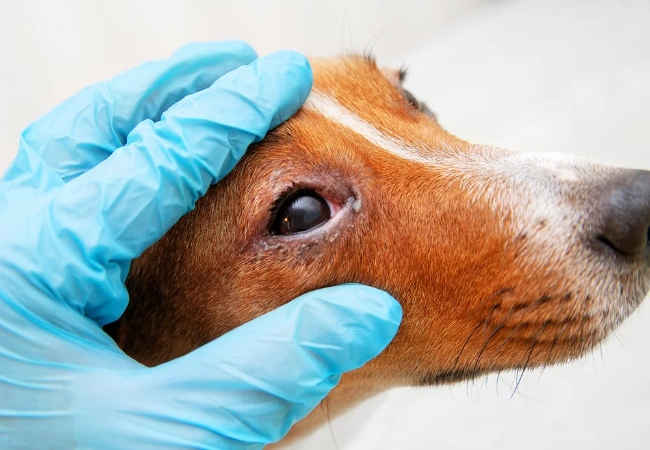Veterinary Guide to Entropion in Dogs (Inward Eyelid) 2025 🐶🩺

In this article
Veterinary Guide to Entropion in Dogs (Inward Eyelid) 2025 🐶🩺
By Dr. Duncan Houston BVSc
🔍 Introduction
Entropion in dogs is an inward rolling of the eyelid, often painful as lashes scrape the cornea. This comprehensive 2025 guide explains causes, symptoms, diagnosis, treatment (temporary tacking, surgery), and prevention to keep your pup’s eye health on point. 🩺
💡 What Is Entropion?
- The eyelid (upper or lower) turns inward so that lashes and skin rub against the cornea.
- This friction causes irritation, redness, discharge, corneal ulcers, pigmentation, and long-term scarring or vision loss.
🐾 Who Is Prone & Risk Factors
- Breed predisposition: short-nosed, wrinkled breeds (Shar-Pei, Bulldogs, Chow Chows); giant breeds (Saint Bernards, Great Danes); sporting dogs (Golden Retrievers, Labs, Irish Setters).
- Secondary forms: spastic entropion from eye pain or inflammation, or acquired due to trauma, scarring, infection, or neurological events.
🚨 Recognizing the Signs
- Inward eyelids and visible lashes rubbing the eye.
- Excessive tearing, discharge (mucus or pus), squinting or blinking (blepharospasm), redness.
- Rubbing at eyes, corneal ulcers, pigmentation, or cloudiness on the cornea.
🔬 Diagnostic Approach
- Complete eye exam—including fluorescein staining to detect corneal damage.
- Evaluation of eyelid anatomy and eyelash contact; pain assessment to determine if spastic in origin.
- Investigate underlying causes like infection, injury, or skin disease.
🛠 Treatment Options
1. Temporary Eyelid Tacking
- Often used in puppies to evert lids until growth reshapes facial structure.
- Local sedation; sutures or staples are placed and typically removed in 2–4 weeks.
2. Surgical Correction (Permanent)
- Hotz‑Celsus blepharoplasty: a wedge of eyelid is removed and repositioned under general anesthesia.
- Puppies often wait until 6–12 months to allow facial growth; adults undergo definitive surgery.
- Other procedures: medial canthoplasty in brachycephalic breeds, lateral techniques in sporting/giant breeds.
- Alternative: temporary hyaluronic acid injections in anesthesia‑risk dogs.
3. Medical & Supportive Care
- Topical lubricants and antibiotic eye ointments pre-/post-op to protect cornea.
- Anti-inflammatories to reduce pain and spastic entropion.
📈 Prognosis & Follow-Up
- Generally excellent after definitive surgery—dogs live comfortably with normal vision.
- Poor outcomes if delayed; corneal damage can be permanent.
- Sutures/surgical sites monitored at 2 weeks and often 4–6 weeks post-op.
- Recurrence is rare but depends on the accuracy of surgical technique and growth patterns, especially in pups.
🛡 Prevention & Owner Tips
- Routine eye checks—notice early squinting, discharge, or tearing.
- Consider delaying breeding to avoid passing conformational predisposition.
- Prompt treatment of eye infections, trauma, or inflammation can prevent secondary entropion.
- Follow surgical aftercare closely—e‑collar, medications, and rechecks to ensure healing.
🔧 Trusted Tools & Services
- Ask A Vet App: 24/7 expert support for eye irritation, choosing between tacking vs surgery 📱 🧬
✅ Final Thoughts
Entropion is painful but treatable. Early recognition, temporary measures for pups, and well-timed surgery offer dogs a pain-free, clear-vision life. Use supportive tools like AskAVet,🐾❤️
Download the Ask A Vet app today for expert veterinary advice on entropion, recovery help, and peace of mind. 👁️📱






